Aberdeen is one of Scotland’s most haunted places. DR FIONA-JANE BROWN of Hidden Aberdeen Tours invites us to take a look at the spookiest spots in her home town of Aberdeen
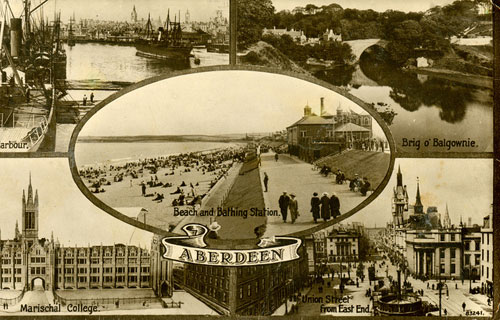
Cameron’s Inn (aka Ma Cameron’s)
6-8 Little Belmont Street, Aberdeen AB10 1JG
Once a hostelry known as the Sow Croft Inn on the city’s western border, flanked by open fields and the river Denburn, Ma Cameron’s is possibly Aberdeen’s oldest pub.
The original building, no. 6 Little Belmont Street, had adjoining stables; no. 8, once a wholesaler’s, was added around the 1890s when the eponymous Cameron family took charge.
Amelia Cameron was the genial hostess presiding over a higher class of tavern which did not sell draught beer to dissuade the more “earthy” clientele.
In the 1930s, the Mitchell family took over, with their matriarch also being nicknamed “Ma Cameron”.
Between the 1770s and the present day, there have only been four owners until Belhaven Breweries took over recently. However, the spirits of the ethereal variety have been very active over the centuries.
Enter the central door and turn right to find yourself in the Snug, possibly the oldest part of the building. A serving hatch gives access to the Snug Bar, and it is through this that both the bar manager and his employee saw a beer tap turn itself on without any manual aid.
It was after hours and the manager went to turn the tap off, thinking it was malfunctioning, but a few minutes later the tap turned on and poured beer into the driptray. Staff have related that this is a common occurrence, as is the feeling of being watched or followed in the quieter parts of the pub.
One decorator working over a Sunday night on his own heard three knocks on the ceiling.
He was puzzled, having been told that the floor above contained a locked room which was never used.
Wondering if he had imagined the sounds, he knocked three times with the end of his paintbrush on the wooden ceiling, to be answered by three more. Needless to say, the man fled, terrified.
Paranormal investigator, Graeme Milne also experienced the presence of a man in old-fashioned dress; the spirit intimated to him that his name was John, then he disappeared. Graeme wonders to this day if this was John Ross, the first landlord.
A great atmospheric pub with loads of nooks and crannies.
Find out more about Ma Cameron’s here.
The Moorings Bar
2 Trinity Quay, Aberdeen AB11 5AA
Now a celebrated rock music venue, the Moorings dates from 1841, when it was a coaching inn right on the harbour, known as McLeod’s Bar after owner Simon McLeod.
The name was changed in 1965, and perhaps this was the first thing which annoyed the indigenous spirits, as various members of staff have reported similar happenings to that of Ma Cameron’s since then.
One manager, Craig Adams, noticed that objects were being moved, sometimes quite violently like the knife which flipped off the bar onto the floor as if thrown.
Patrons reported being tripped or shoved in the area near the toilets.
When a mop bucket on wheels moved across the floor under its own power, he decided to investigate.
The incidents had started after an old price list had been removed from the main bar, and after setting up a tape and microphone, Craig was shocked to find he had recorded an EVP which said emphatically, “Put the price list back.”
Another disturbing event took place in 2005, when following a police search for a missing woman, a regular at the pub and sadly, an alcoholic, Craig was in his makeshift office in the cellar, a stone-lined area below street level.
A passport photograph fluttered down from a crack in the ceiling onto his desk.
Picking it up, he saw it was the face of the missing woman obviously in happier times, and written on the back, her name and the date, 1972.
Craig was so shocked, he ran upstairs and went outside to catch his breath.
He later learned that his regular had died in hospital around this time, and having no close family, the news had never reached her friends at the Moorings.
Was she trying to tell them of her demise? Today you are more likely to be frightened by the volume of the music than activity from the other side, but it is a quirky place worthy of a visit.
His Majesty’s Theatre
Rosemount Viaduct, Aberdeen, AB25 1GL
HMT is one of the few remaining Frank Matcham-designed theatres in Britain. Built in 1906, it boasts its own personal ghost, Jake, the spirit of a former employee who tragically died in 1942 when struck in the head by a rapidly-spinning winch handle.
Jake, aka John Murray was 69 when he was killed, attempting to put the brake on a lift which was transporting circus horses to the lower floor. He was a fly-operator, rigger, and general handyman who could recall every detail of all the performances he had witnessed.
“Jake” manifests in various ways, particularly by cold spots in the passageway nicknamed “Lambeth Walk” which runs along the side of the building to an outside exit between the theatre and its next-door neighbour, St Mark’s Church.
The red-painted brick wall at the foot of the passage is directly opposite where Jake’s death occurred. Sometimes he is seen as a shadowy figure on the old fly floor bridge which runs above the stage.
Staff have heard male voices and seen a figure in a brown apron. Theatre historian, Edi Swan reports that Jake is fond of moving things and opening doors, but one night this regular nuisance proved a great boon to the young Edi when he worked in HMT.
Having fallen and broken his ankle, Edi crawled to the basement fire exit, hoping by some miracle that the manager had not padlocked it as he normally did. To Edi’s relief the door was open and he was able to hobble across the road to the nearby Woolmanhill hospital for help.
Another time, a paint canister had blown up in Edi’s face and he was blundering blindly across the stage trying to reach the sink in the prop cupboard in the wings. In danger of falling into the empty orchestra pit, Edi suddenly felt a strong guiding hand taking him to safety.
After washing his face, he realised that Jake had again come to his aid. Although quiet since the huge refurbishment 16 years ago, folk believe Jake keeps an eye on his living colleagues still to this day.
The theatre occasionally offers backstage tours, but even if you just go to a show, you will be impressed by the fabulous Edwardian décor and Matcham’s impressive exterior.
Chaplain’s Court
No. 20, The Chanonry, Old Aberdeen, AB24 1RQ
Older than our previously described buildings, the original structure dates from 1519, founded by Bishop Gavin Dunbar as accommodation for the “chaplains” or vicars of St Machar Cathedral, the old university burgh’s mother church.
Twenty men, all engaged in various administrative and liturgical work, lived and worked therein, eating at a common table in an open courtyard adjacent to the gardens of the Bishop’s Palace.
Even today, the old “Bishop’s Port” or gateway can be seen in the wall nearest the end of the street, surmounted by Dunbar’s own coat of arms, conspicuous for its bishop’s mitre crest.
Variously rebuilt over the centuries, the house has been a set of classrooms for divinity students, a manse for the cathedral and now separate flats, usually occupied by students. Reports of paranormal activity abound in the Chaplain’s Court including mysterious footsteps, the ghostly image of a woman in a rocking-chair knitting, and the sounds of people eating and talking in the area where the chaplains had their table.
The best-known attested haunting dates from the 1920s when a Rev. Baird, his wife and young son lived in the house when it was a church manse; young Master Baird would wake up often screaming for his mother, telling her there was a man sitting on the chair by the fireplace reading a book.
Mrs Baird tried to comfort her son by allowing him to have his pet dog in the room until he went to sleep, but the moment she removed the dog, her son would wake up a few minutes later declaring the man was back.
Dismissing his son’s experience as childhood night-terrors, the minister urged his family to forget about it. A few years later when Master Baird had left for college, Mrs Baird had a nurse lodging in his old room.
When the nurse confidentially told her landlady that she had woken up to the sight of a ghostly man sitting in the chair by the fire, Mrs Baird began to take the whole matter more seriously. She contacted the Edinburgh Psychic College, founded in 1932 (known today as the Edinburgh College of Parapsychology), who sent a spiritualist called William Reid to investigate.
Reid was soon able to tell Mrs Baird that the spirit was that of a previous resident, a divinity lecturer called Professor Johnstone, whose favourite room was now her son’s bedroom. The spirit made known that he was sorry for upsetting anyone as all he ever wanted to do was sit in his old chair, read a book and fall asleep by the light of the fire. Reid helped the professor move on.
When Mrs Baird told some of the lecturing staff about her experience and repeated the description Reid had given her of the ghostly prof, one exclaimed “Why, that’s old Johnstone! Yes, of course, he lived in your house!” The professor may have departed, but with over five hundred years of history in its walls, the Chaplain’s Court could still have the odd bump in the night.
Read more here about Chaplain’s Court, The Chanonry, Old Aberdeen
First Bus HQ
395 King Street, Aberdeen, AB24 5RP
This Scots baronial edifice looks more like a castle than a bus depot; built in 1862 to be the home of the Aberdeenshire Highlanders, the city’s volunteer militia, the King Street Barracks still retains its Victorian façade.
Before the most recent refurbishment, the barracks still contained the former convalescent hospital wing from the Great War. Premises all over the city including schools and large private houses were converted for this purpose from 1915 onwards, and it is from this time that the Barracks’ resident ghost dates.
Home of the 3rd Battalion Gordon Highlanders (Aberdeenshire’s most famous regiment) from 1882, it was convenient to have a hospital facility where those injured in the trenches could rest and heal, but some injuries were in the mind and thus impossible to see.
One Captain Beaton had been blown up by a German shell, sustaining a head injury; after a month in bed he was given duties as the quartermaster to help him reintegrate swiftly to military life. The day came when his orders arrived to return to Flanders, but this proved more than the captain could bear, and he was found hanging by a noose of his own making from the rafters in the mess room turret.
The shame of a soldier committing suicide seemed to cause the whole affair to be hushed up, especially since a malicious rumour spread that Beaton had been pilfering from the stores of which he was in charge.
His name even disappeared from official records, but the unhappy man’s spirit could not be persuaded to vanish so easily. Post-war housing shortages led to the barracks being converted into flats, some empty rooms being a perfect playground for children.
One woman recalled visiting an aunt at the barracks while a youngster. She had gone upstairs to play and found the bedroom had an occupant, a soldier in uniform, sitting on the edge of the bed, wrapping a bandage around his head.
She said hello to her new playmate and he smiled in return, but then disappeared before her eyes! This was the beginning of many manifestations including traditional cold spots in the corridor connecting to the tower where Beaton hanged himself, sensations of being followed and sightings of the dead soldier, sometimes in his uniform, sometimes in his distinctive dress kilt and tunic.
One bus driver reported to me during a walking tour of mine which takes in the barracks, that he had been going upstairs in the turret, which was then used as a store, to collect some boxes. He was sure his colleague was right behind him, and finding that he was not getting any help, turned to scold his friend and saw there was nobody there.
The other driver, on joining his colleague saw the horrified look on his face and asked him if he’d seen “the ghost”. The spirit has been quiet since the old hospital wing was demolished, but the turret where he jumped to his death still stands, and, as some believe, a fragment of the original rope is still suspended from the beam, as Beaton’s would-be rescuers were too superstitious to cut it down.
The bus depot can be viewed clearly from King Street, and is sometimes accessible on Doors Open Days. Find out more about First Bus Aberdeen here.
Photographic images of Aberdeen in this article Copyright Fiona-Jane Brown © 2015

DR FIONA-JANE BROWN began Hidden Aberdeen Tours as a response to the deep concern of locals about the increasing industrial and business development situation in the city. Dr Brown holds a PhD in Ethnology, gained in 2010 after studying at the Elphinstone Institute, Aberdeen’s unique centre for the study of North-East Scottish folklore. She also currently works as a supervisor for a local events company.
The author of two local history works, Hidden Aberdeen: History on your doorstep and under your feet and Hidden Aberdeenshire: The Coast, Dr Brown is currently working on a new volume, Hidden Aberdeenshire: the Land, due out in Autumn 2015.
She also writes Sherlock Holmes’ pastiches with MX Publishing and self-publishes fiction under the pen name of Janet Swan. Her interest in the supernatural stems from her doctoral research into beliefs and traditions in Scottish fishing communities, and as a tour guide in Aberdeen features many local spooky stories in her walks.


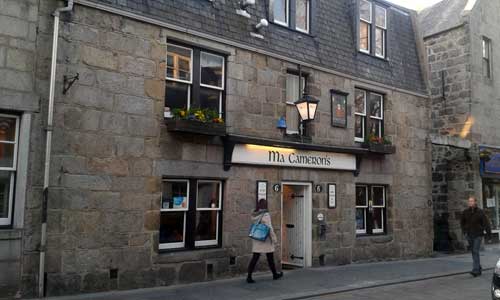
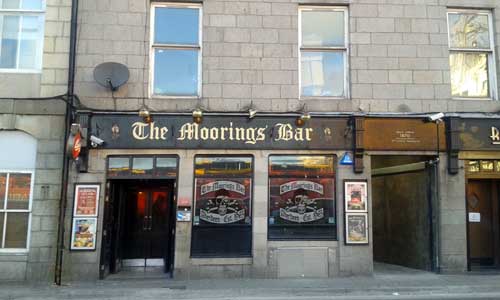
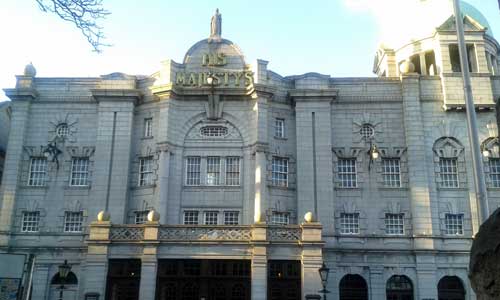
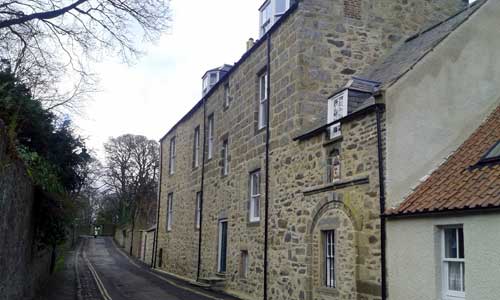
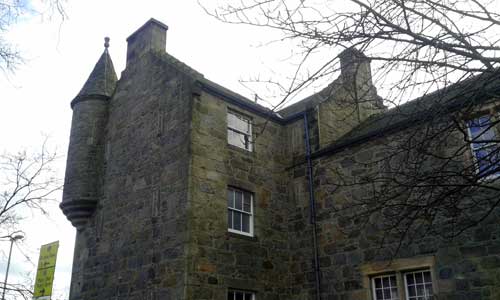
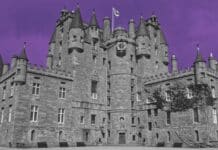





Hi I used to live in Aberdeen( now back in oz) I worked at cafe 52 on the green, about 8 years ago , anyway, one night after work I took a photo of the stairs leading to union street I didn’t see anything accept bright light coming down the stairs, upon looking at the photo I caputured a pipers spirit it has great detail and I think orbs around him, I still have it on my old mobile, amazing! Scared me a bit:)
Hi Rob
I’m Goochies Paranormal Sessions on FB/YouTube
I Live in Aberdeen Town
I’d be interested in seen this photo along with the story if poss pls